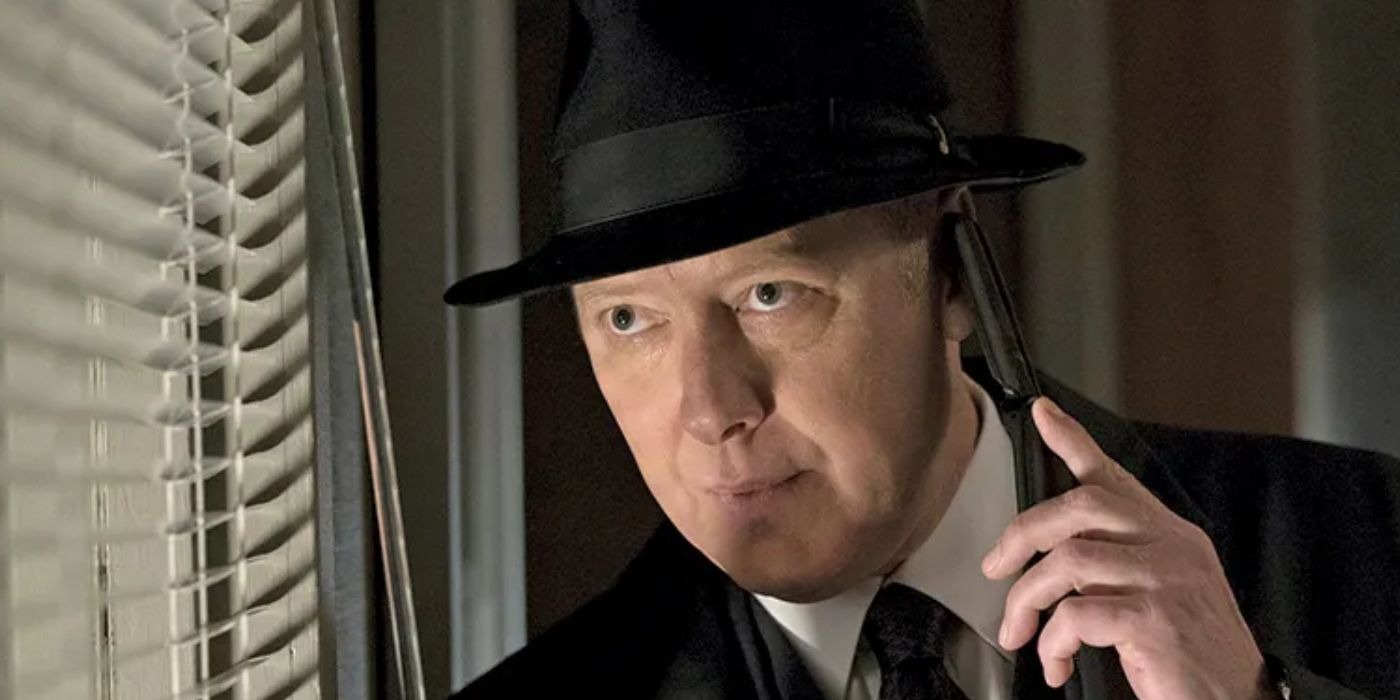
When The Blacklist premiered on NBC in 2013, it introduced audiences to Raymond “Red” Reddington (James Spader), a calculating and charismatic criminal mastermind who voluntarily turns himself in to the FBI — but there’s a catch. He’ll help them track down the world’s most dangerous fugitives, but only if he can speak to one agent, Elizabeth Keen (Megan Boone). Over the course of 10 seasons, Red became one of TV’s most enduring and enigmatic figures, brought to life by Spader’s magnetic performance. But what many viewers may not realize is that Red was directly inspired by a real-life criminal whose story is just as dramatic.
Whitey Bulger Made Headlines When ‘The Blacklist’ Was Being Created
From the beginning, The Blacklist set out to explore the paradox of a criminal who becomes an asset to the very system he once evaded. When Raymond Red turns himself in during the series premiere, his motivations are murky and his conditions even more unusual. A former Navy officer turned international criminal, Red claims to possess intimate knowledge of a covert network of fugitives so dangerous that even the FBI is unaware of them. This dynamic of a criminal manipulating the justice system for his own purposes mirrors the real-life story of James “Whitey” Bulger, the Boston mob boss and longtime FBI informant.
According to showrunner John Eisendrath, Bulger’s 2011 arrest after his 16 years on the run inspired the core premise of the show. In a 2013 interview with Collider, Eisendrath confirmed that the idea of building a police procedural around a “bad guy” catching other bad guys emerged just as Bulger was making headlines. The central question became: “What would happen if a man like Whitey Bulger turned himself in and said, ‘I have some rules, but if you follow them, I’ll give you the names of the people I’ve worked with during the 20 years I’ve been a fugitive’?”
Bulger had long been one of the FBI’s most wanted fugitives, and his eventual capture shocked the public. After years of evading capture, he was found hiding in plain sight in a modest Santa Monica apartment with his longtime girlfriend. His dual role as both criminal and informant, offering intelligence to law enforcement while continuing to orchestrate brutal crimes, captivated the nation. That complex moral ambiguity laid the perfect foundation for The Blacklist, and the character of Red.

‘The Blacklist’ Is Only One Example of Whitey Bulger’s Influence on Film and TV
Red and Bulger share more than just a criminal resume, both being masters of control and equally charming and calculating. Like Bulger, who manipulated his relationship with the FBI to eliminate rival gangs and protect his own empire, Red uses his “blacklist” as leverage. He presents it as a tool to help the FBI capture global criminals, but each name also serves a deeper, more personal purpose. That duality makes for a compelling procedural TV concept. It’s also why Bulger has continued to inspire not only the creators of The Blacklist, but some of the most acclaimed writers and directors in crime storytelling.
Martin Scorsese’s The Departed, though fictionalized, draws clear inspiration from Bulger’s infiltration of law enforcement and the mythology surrounding his years as a fugitive. Jack Nicholson’s character, Frank Costello, shares many similarities with Bulger, including his roots in the “Southie” housing projects and his double life as both crime boss and informant. Even shows like Ray Donovan have featured characters with backgrounds that are clearly shaped by the Bulger legacy. How these men present themselves to the world, versus what they’re truly capable of behind closed doors, creates constant tension. Their motives are unknown, and that complexity makes them endlessly compelling — not just to create, but to watch.
The Blacklist leans into that legacy by making Red both a valuable asset and a dangerous unknown. Spader’s portrayal is what truly elevates Reddington from criminal archetype to unforgettable character. He plays Red as a man full of contradictions and as a man who knows how to manipulate, but is also deeply loyal to those he trusts. Like Bulger, Red isn’t trying to be likable, but it’s hard not to be even a little fascinated by him. One of the show’s best elements is watching Red straddle the line between justice and self-interest, often doing the right thing in the most morally questionable ways.
What made Raymond Reddington so compelling, more than his moral ambiguity, was how genuine he felt. It’s no surprise that Whitey Bulger inspired such a layered character, but it was James Spader’s performance that elevated Red beyond the concept. The Blacklist was packed with intricate twists and global intrigue, but at its core was a character grounded in history, rich with contradictions, and endlessly fascinating to watch. That seamless blend of fact and fiction is what made Red unforgettable, and why he remains one of television’s most iconic antiheroes.
